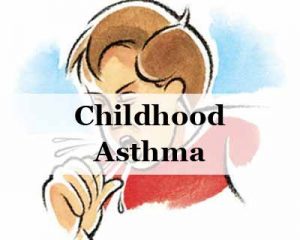- Home
- Editorial
- News
- Practice Guidelines
- Anesthesiology Guidelines
- Cancer Guidelines
- Cardiac Sciences Guidelines
- Critical Care Guidelines
- Dentistry Guidelines
- Dermatology Guidelines
- Diabetes and Endo Guidelines
- Diagnostics Guidelines
- ENT Guidelines
- Featured Practice Guidelines
- Gastroenterology Guidelines
- Geriatrics Guidelines
- Medicine Guidelines
- Nephrology Guidelines
- Neurosciences Guidelines
- Obs and Gynae Guidelines
- Ophthalmology Guidelines
- Orthopaedics Guidelines
- Paediatrics Guidelines
- Psychiatry Guidelines
- Pulmonology Guidelines
- Radiology Guidelines
- Surgery Guidelines
- Urology Guidelines
Lengthy fertility treatment increases child’s asthma risk

A new study published in the journal Thorax has reported that children whose parents take more than a year to get pregnant and undergo common mechanisms underlying parental sub-fertility and recurrent miscarriages might influence offspring asthma pathogenesis.
Previous research suggested that children conceived with the aid of fertility treatment, known as assisted reproductive technologies, or ART for short, may be more prone to asthma.
An estimated one in four couples globally require assistance to conceive according to WHO. Assisted reproductive technologies (ART) are associated with greater risk of adverse pregnancy outcomes and may also have long-term consequences for both the mother and child.
In a similar study, Medical Dialogues has earlier reported that pregnant women who take antacids may be more likely to have children who go on to develop asthma than their counterparts who don’t take these medications.
Read Also: Antacid use during pregnancy tied to childhood asthma
Still, there is no clear evidence whether it’s the ART procedures themselves or as yet unidentified factors associated with sub-fertility that might be behind this heightened risk.
Maria Christine Magnus and associates analyzed a cohort study to clarify the role of parental subfertility and unmeasured confounding on the association between ART and childhood asthma, and to examine the possibility for common mechanisms underlying parental subfertility and miscarriages influencing asthma pathogenesis.
The researchers linked birth and prescription data from national Norwegian health registries (involving 474,402 children born between 1998 and 2009) and from the Norwegian Mother and Child Cohort Study (75,797 children).
The data included information on fertility treatment; time to conception; number and timing of any previous miscarriages; and potentially influential factors, such as maternal age, asthma, smoking during, and weight before, pregnancy.
Childhood asthma was defined as the use of asthma drugs in the preceding 12 months when the child was 7 years old.
The investigators analyzed that ART offspring had greater asthma risk. The sibling analysis yielded similar associations. Children in either group who had been conceived with the aid of fertility treatment were up to 42 percent more likely to have asthma.
Read Also: Fish oil and fish consumption during pregnancy prevents childhood asthma
The elevated asthma risk among ART offspring was attenuated when they were compared with spontaneously conceived offspring with time to conception >12 months and it was found that they were 22 percent more likely to have asthma.
Asthma risk also increased with a maternal history of early miscarriages (≤12 weeks). The number of previous miscarriages was also associated with an incrementally heightened risk of asthma, rising from 7 percent for one to 24 percent for three or more, although this was only observed for miscarriage during the first 12 weeks of pregnancy.
“Our findings provide some evidence to support that both parental subfertility and characteristics related to the ART procedure might increase offspring asthma risk, although this needs to be confirmed in future studies,” write the authors.
For full information log on to
http://press.psprings.co.uk/thx/november/thx211886.pdf

Disclaimer: This site is primarily intended for healthcare professionals. Any content/information on this website does not replace the advice of medical and/or health professionals and should not be construed as medical/diagnostic advice/endorsement or prescription. Use of this site is subject to our terms of use, privacy policy, advertisement policy. © 2020 Minerva Medical Treatment Pvt Ltd